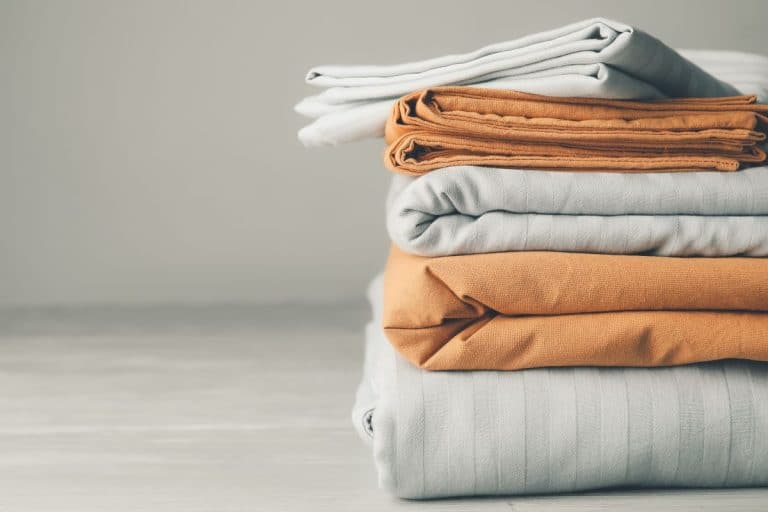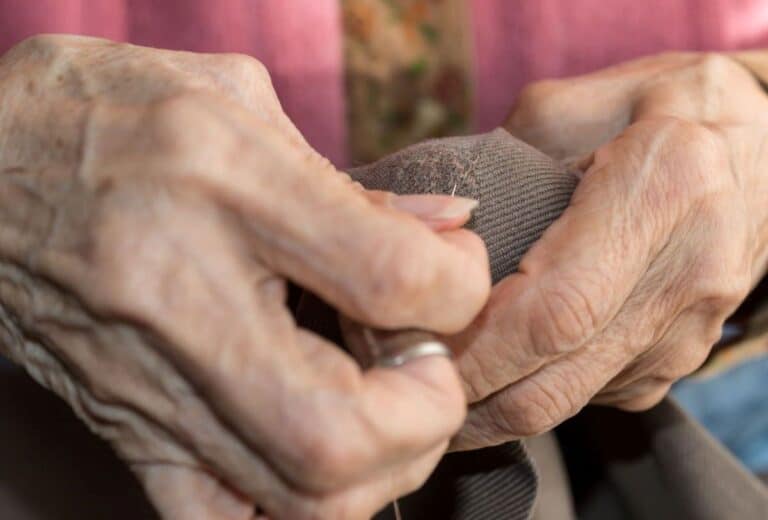18 Realistic Ways to Stop Impulse Spending and Save
This website may earn commissions from purchases made through links in this post.
Impulse spending is fun, right?
It’s fun to have new things.
That is until buyer’s remorse sets in. Or the credit card bill arrives.
And your savings balance for that dream holiday just isn’t budging.
Marketers spend a lot of time and money enticing us to buy stuff we don’t need. For the sake of our budget and our long-term goals, we need a few tactics of our own to protect ourselves from temptation.
Below are eighteen ways to stop impulse spending. The key to success is to pick two or three that work best for you and have those in your arsenal for whenever the temptation to spend arises.

1. Know Your Buying Weaknesses and Plan For Them
When it comes to impulse buying, we all have ‘weaknesses’ that cause us to spend money, and these come in two forms:
- Stuff we like and buy too much of
- Triggers that cause us to buy things we don’t need.
Let’s unpack this.
We all have things we desire a lot. We see it. We like it. We want it. We buy it even when we don’t need it.
My weakness is books. With kindle books being sooo cheap and sooo easy to buy, I have ended up with waaay too many books. I could, in theory, spend hours browsing clothes stores without buying anything (not hours, that sounds like torture), but bookstores are a den of temptation, so I know to avoid them if I don’t want to spend money.
The second weakness is the triggers that make us buy. They might be emotional triggers like purchasing something when we’re feeling down. It might be a FOMO trigger – fear of missing a great deal or not fitting in with the crowd. Identifying your spending triggers and working around them helps you stick to your budget.
If you want to know more about identifying and dealing with spending triggers, check out these articles:
2. Find Ways to Reward Yourself Without Shopping
Do you use shopping as a reward?
A red flag to look for when shopping is the phrase “I deserve this…” – this is a sure sign shopping is a reward.
While it’s healthy to set goals and reward your progress, using shopping can be counterproductive, especially to budget goals!
That doesn’t mean you should give up on rewards but look for other ways to treat yourself. For reward ideas, check out the article: How to Get That Buyer’s High Without Buying New Stuff.
3. Shop Less Often
Out of sight, out of mind is certainly true when it comes to impulse spending.
By going to the shops less (or spending less time browsing online stores), we’re less exposed to temptation.
The Gruen Effect refers to how stores lure us in with beautiful displays, ambient lighting, alluring smells, enjoyable music and fun experiences (like coffee in bookstores) and then keep us there with confusing layouts (think Ikea). It’s designed temptation.
There are three practical ways to reduce shopping time:
- Do activities for recreation that isn’t shopping (this includes browsing online stores when you’re bored)
- Socialise outside of the mall
- Plan and batch your shopping.
Hands up if you go to the mall when you’re bored for a spot of window shopping. Me too. And how often do you come across stuff you didn’t know you needed, but suddenly you feel you do?
Other things to do when you’re bored include going for a walk, doing some home improvements, reading, watching a movie, going to the beach or park, or socialising with friends.
However, it’s smart to find other places to catch up with friends than at the mall, especially if your friends encourage you to buy stuff.
Finally, shop less by batching your shopping errands, which brings us to the following tips.
4. Shop With a List…
…and make a rule not to buy anything that isn’t on the list.
We can’t avoid the shops altogether. But we can make our shopping trips more efficient and less budget-busting if we shop with a list – and stick to it! When you’re shopping for specific items you’ve written down, you’re more focused and less likely to browse and come home with things you don’t need.
Keeping a list also helps you to batch your shopping tasks to one day of errands. I have a whole bunch of lists on my phone for when I think of things I need. A grocery list, a hardware list, a list of clothes the kids need…that way, I’m not popping to the store all the time; I can get everything done at once. It also means I’m less likely to forget something and have to go back – increasing exposure to temptation.
A list has to be thorough for it to be effective. We’ve all gone into the supermarket for bread and milk and come out with ten other items. The main reason for this is that we didn’t trust the list. We suddenly remember that we haven’t planned for Wednesday night’s meal, so before hitting the shops, make sure your list is thorough. And then stick to your list.
5. Reduce Social Media
Nothing taps into our natural inclination to fit in more than social media. We might scoff at keeping up with the Jones’, but our desire to be part of the group is a primitive survival instinct that predates caveman times when social exile meant certain death.
The problem is that social media turns the dial way up on that need to fit in.
There’s the envy we feel when random acquaintances from that job we had in high school post about their new car or dream home renos or their overseas trip. Or the Instagram influencers painting lifestyle pictures we (secretly) aspire to (come on, you know you do too). Of course, exposure to all kinds of advertising is the price we pay for all this free online content (sorry, but it costs money to run a website).
There are a hundred good reasons to reduce social media consumption. Reducing the temptation to impulse buy is one of them.
6. Less Lifestyle, More Living
My local library just increased its free online magazine library—over 2,500 magazine titles from all around the world. You would think I would be thrilled – all those free magazines!
But so far, it cost me the price of four throw pillows for the lounge that I felt I needed (I didn’t) after reading all those Home Beautiful magazines.
Lifestyle magazines are less about living and more about creating an image. Sure, it’s nice to surround yourself with pretty things that make you happy, but experiences can make you happier and – depending on what experiences you choose – will cost you less money and keep your clutter low. What I’m saying is, do you want to choose a lifestyle of stuff or a lifestyle of experiences?
7. Unsubscribe
Email newsletters to your favourite stores can be great for saving you money – if you need what they are advertising.
Otherwise, they are another source of temptation to get you to impulse buy. Clicking unsubscribe will eliminate that temptation.
But what if you use those emails to help you save money. How do you keep track of useful sales without being sucked into temptation?
Here filters and folders are your friends.
To still receive store guff but avoid temptation, create a folder for those emails and an automatic filter so that they bypass your inbox and get filed straight into that folder.
Out of sight, out of mind.
You don’t see them hitting your inbox, so that limits their temptation factor, but they are still there. You can even set up a filter to have emails automatically deleted after a certain date!
If you’re looking to buy something specific or browsing for a gift, you can then go to that folder and check if there are any current sales.
If even having a folder is too tempting, set up a separate email account for store emails or don’t sign up at all and just shop around when looking for something you need.
8. Have an Accountability Partner
One of the drivers of AA’s success is accountability partners. When temptation comes knocking, you’ve got someone (preferably more than one person) to talk you out of it and hold you accountable.
My husband and I are each other’s accountability partners. We each have a private ‘splurge fund’ (more on that below), which we can spend on whatever we want. For me, it’s usually coffee and books.
But for larger purchases, household purchases or stuff for the kids, we always talk it over.
9. Avoiding Shopping Under the Influence
When it comes to online shopping, I have one firm rule: no shopping online after wine because we all know alcohol breaks down inhibitions and makes us think ‘what the heck’…or not think at all.
When it comes to impulse buying, we want to be a little inhibited. We want to have the wherewithal to stop and ask ourselves, do I really want to buy this?
If you find yourself browsing online (we’ve all been there), instead of putting things in your cart, save them to your wish list (see more below) or Pinterest board if that’s your jam. It will feel the same as online shopping without spending money.
10. Have Goals and a Reason to Save
Why stop impulse spending – I mean, apart from avoiding debt?
Having a compelling answer to that question helps you to avoid buyer’s remorse.
Because I’m saving a deposit for a house/paying off debt/saving for a holiday/saving to study are all compelling reasons to leave that ‘had-to-have’ item at the store.
We tend to make emotional purchases and use our capacity for rationalisation to justify those purchases afterwards (we’re not nearly as rational as we think we are).
This looks like buying clothes we see on impulse and then convincing ourselves after the fact that we really needed them for work.
Having a goal and a plan for your money means you’ve done the rationalisations first. You’ve decided on your money goals and you’ve set aside a clothing budget so you know how much you can spend on clothes for the month.
To make it even more effective, an idea is to have a picture of your dream home or holiday or whatever you’re saving for stuck to your wallet or credit card. Something to trigger emotions about what you’re saving for. It will help counteract the emotions of buying something new and act as a reminder to delay gratification for something better.
11. Understand Opportunity Cost
The things we buy don’t just cost us money; they cost us alternate opportunities. For example, if I spend $100 on unneeded clothing, I can’t spend that $100 on going out or on a holiday or a home. Spending it on clothes has cost me those opportunities.
It’s crucial to understand opportunity cost and remember it before you get to the cash register. Too often, we’re thinking about the emotional opportunities our purchases will bring, like feeling good in new clothes. These emotions are fleeting, and we have to make another purchase to get that feel-good high again.
This is where we come back to our goals.
A picture of your goals on your wallet is a reminder of the opportunity cost of the impulse buy you’re about to make.
For the exact questions to ask when considering opportunity cost, check out the article: Make Better Financial Decisions By Asking These Three Strategic Questions.
12. Calculate The Cost In Hours
There’s the monetary cost and the opportunity cost, but what about the cost in time?
How much time are your impulse purchases costing you in terms of working hours?
Henry Thoreau explains it best:
‘One says to me, “I wonder that you do not lay up money; you love to travel; you might take the cars and go to Fitchburg today and see the country.” But I am wiser than that. I have learned that the swiftest traveller is he that goes afoot. I say to my friend, Suppose we try who will get there first.
The distance is thirty miles; the fare ninety cents. That is almost a day’s wages. I remember when wages were sixty cents a day for laborers on this very road. Well, I start now on foot, and get there before night; I have travelled at that rate by the week together.
You will, in the meanwhile, have earned your fare and arrive there some time to-morrow, or possibly this evening, if you are lucky enough to get a job in season. Instead of going to Fitchburg, you will be working here the greater part of the day.
Henry David Thoreau, (1817 – 1862) American Author, Walden
In other words, how many hours will you need to work to pay that item off?
Is that item worth four hours of your work? Six hours? Ten hours?
For me, this is a compelling way to stop me right in my tracks when I’m tempted to buy.
13. Create a Wish/Wait List
Salespeople are trained not to let you walk away without buying. They know if you go away and think about it, you will probably not make that purchase. It’s why FOMO is such a powerful sales motivator:
buy now and avoid disappointment!
or
buy now before the sale ends!
Avoid rushed decisions by making it a rule to:
Always wait at least 24 hours before purchasing something.
Longer is better, but 24 hours will give you time to sleep on it and maybe talk to your accountability partner about why you should buy it.
If you decide you want it, it will also give you time to shop around and see if you can get a better price.
So instead of making a purchase, write the item on a wish/waitlist.
The easiest way to do this is to take a photo with your phone. If you like to be organised, you can create a folder in a note-taking app like Evernote and save your images there. Or you can keep a list in Evernote or whatever note-taking app you like and write your wish items there.
Then return to your wishlist in a few days or weeks or months and see how many things on that list you still want. It might surprise you how few things you do.
14. Leave Your Credit Card At Home
If you have to go to the shops – maybe a friend wants you to help her to buy something – and you know you’re going to be tempted, then leave your credit card at home.
That way, it doesn’t matter how much you’re tempted; you can’t buy anyway.
Some people suggest freezing your credit card – literally putting it in a glass of water and sticking it in the freezer. This seems a bit extreme to me, but if the temptation to shop is Isla Fisher strong, more drastic measures might be needed.
15. Don’t Save Your Credit Card Details Online
For many of us, especially after 2020, going to the shops isn’t the problem. It’s online shopping that causes all the temptation.
All the tips in this article relate to online shopping, but there is one specific tip for online shopping: don’t save your credit card details.
Take, for example, Amazon’s ‘one-click to buy.’ All your details are saved in their database, so all you have to do is press one single button, and you’ve bought something. It doesn’t even feel like spending money.
They’ve made it as frictionless as possible for you to spend. As a book addict, I know all too well how easy it is to hit the buy button without thinking about my purchase.
But if you have to get out of bed and go downstairs to find your credit card, that gives some distance to ask yourself: ‘do I need this?’
Making online purchases less convenient will give you some breathing space to apply the other tips in this article.
16. Have a Splurge Fund
It sounds counterintuitive; after all, we’ve spent this whole article talking about how not to spend on impulse.
And now this tip is all about having a splurge fund so you can spend on impulse!
The thing is, a splurge fund gives you CONTROL. It allows you to say yes occasionally without blowing the budget or feeling guilty. It means you don’t have to feel deprived.
How much your splurge fund is will depend on your income and your savings goals. It might be just $5, so you can have a coffee with a friend each week. Or it might be a little bit more so you can indulge in a book or two each month.
Whatever it is, a guilt-free splurge fund allows you a little flexibility in the budget without derailing it.
17. Pay With Cash
Like one-click-to-buy, tap-to-pay is so frictionless it doesn’t even feel like you’re spending money. And that’s a bad thing. It’s too easy to spend money you don’t have.
On the other hand, if you ONLY pay for splurges with cash, you can’t spend more than you have in your wallet.
So an effective way to limit impulse buying to your splurge fund amount is to withdraw it in cash and use cash for your splurge purchases.
18. Save What You Don’t Spend
You’ve resisted the impulse to spend – congratulations!
To fully capitalise on your discipline, take the money you were going to spend and put it towards your savings – maybe towards your goal.
If you don’t have the cash because you would have bought it on credit, give yourself a pat on the back for not digging the debt hole deeper. Your future self will be glad you don’t have to pay that purchase off.
Marketers spend a lot of time and money, thinking up ways to entice us to buy on impulse. So your budget and long-term goals must have some armour against the onslaught. But if you do impulse spend, it’s also important not to beat yourself up about it but to use these tips to strengthen your armour for the next time.







